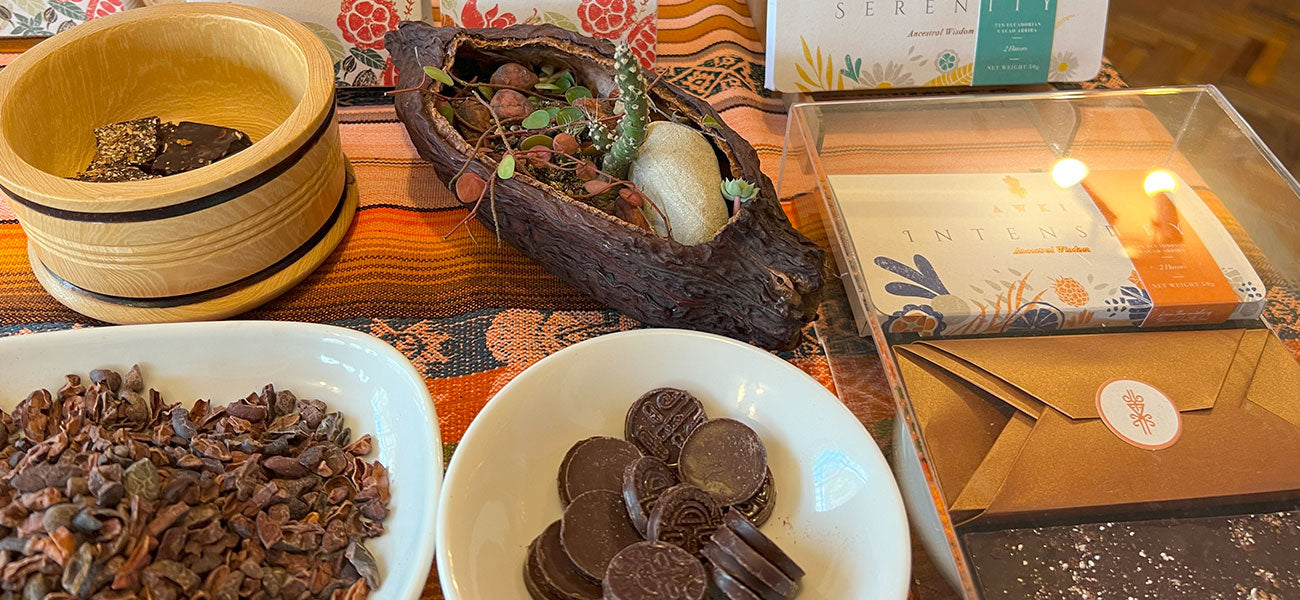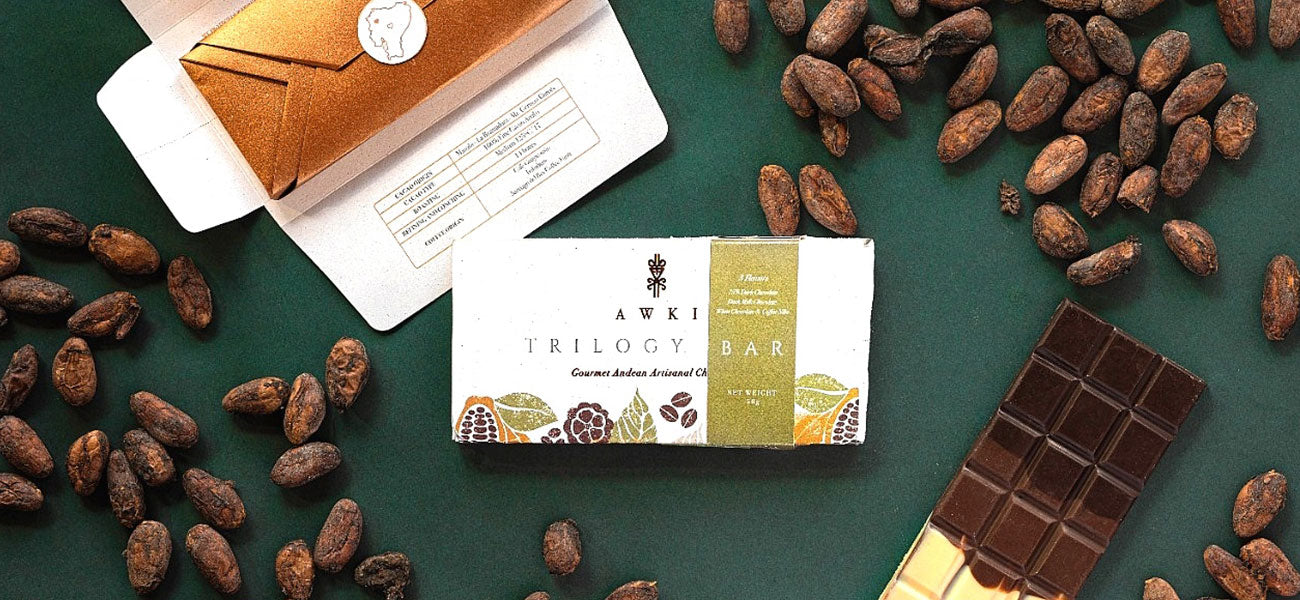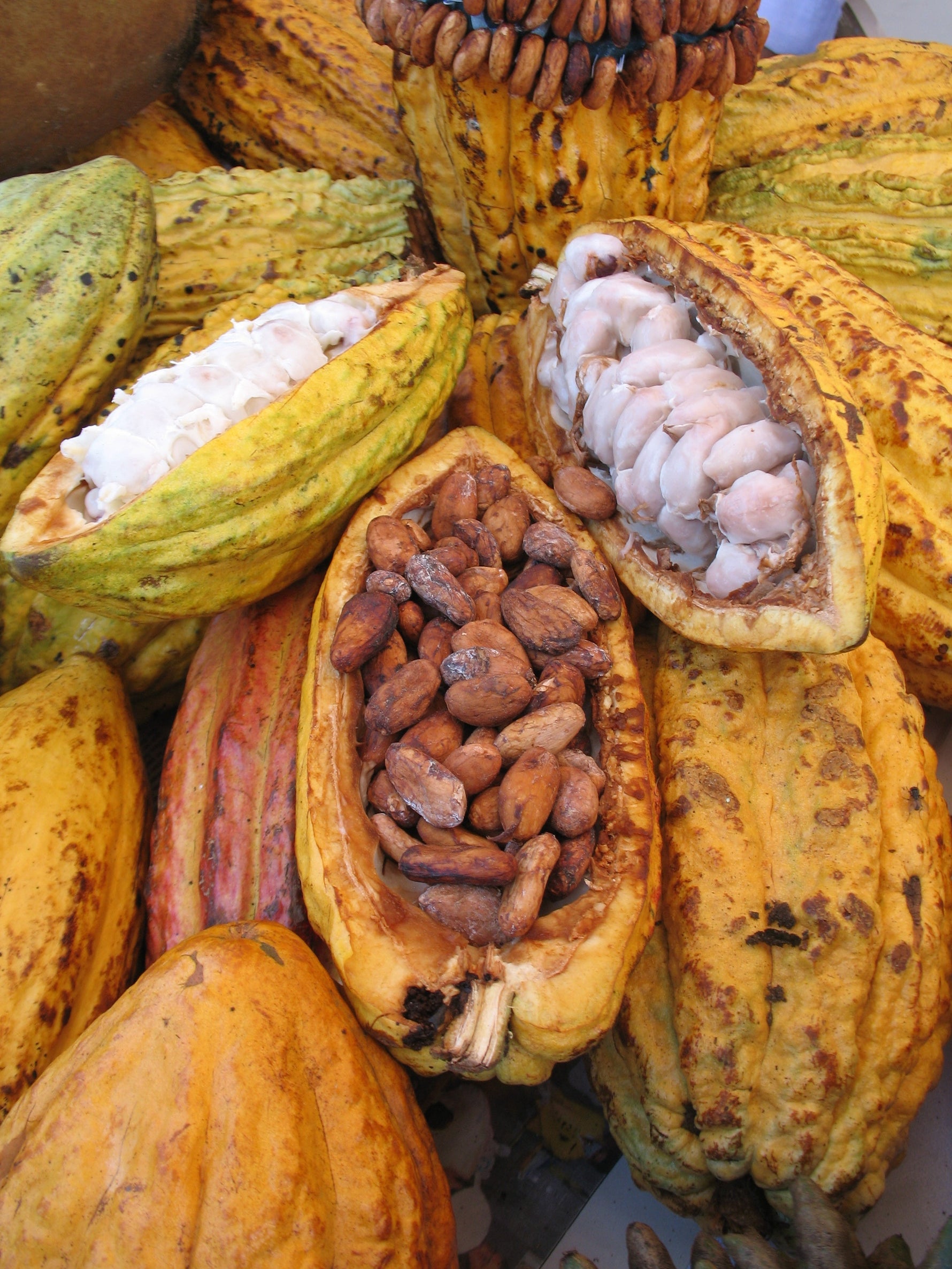The Ancient Secret Elite Athletes Are Rediscovering
Aztec warriors consumed cacao before battle. Mayan runners drank it before long-distance journeys. These ancient athletes understood something modern sports science is just beginning to validate: pure cacao is one of nature's most powerful performance enhancers.
While today's athletes reach for synthetic pre-workouts loaded with artificial stimulants, questionable additives, and ingredients you can't pronounce, the answer to enhanced performance, faster recovery, and sustained energy has been hiding in plain sight for thousands of years. Pure cacao offers a clean, natural alternative that doesn't just match synthetic supplements – it surpasses them.
The Nitric Oxide Advantage: More Oxygen to Working Muscles
The most significant athletic benefit of cacao comes from its extraordinary ability to boost nitric oxide (NO) production. Nitric oxide is a signaling molecule that dilates blood vessels, increasing blood flow and oxygen delivery to muscles during exercise.
How Cacao Creates the NO Effect:
Cacao is exceptionally rich in flavonoids, particularly epicatechin, which stimulates endothelial cells lining your blood vessels to produce more nitric oxide. Studies show that cacao consumption can increase NO production by up to 50%, creating measurable improvements in athletic performance.
Performance Benefits:
Enhanced Oxygen Delivery: More blood flow means more oxygen reaches working muscles, delaying fatigue and improving endurance.
Improved Nutrient Transport: Dilated blood vessels deliver glucose, amino acids, and other nutrients more efficiently to muscles during exercise.
Better Waste Removal: Enhanced circulation helps remove metabolic waste products like lactic acid that cause muscle fatigue and soreness.
Reduced Blood Pressure: The vasodilatory effect lowers blood pressure during exercise, reducing cardiovascular strain.
Research Validation: A landmark study published in the Journal of the International Society of Sports Nutrition found that athletes who consumed cacao before cycling time trials showed significant improvements in performance compared to placebo groups. The cacao group completed trials faster and reported lower perceived exertion.
Theobromine: The Athlete's Stimulant
While most athletes rely on caffeine for pre-workout energy, cacao's primary stimulant – theobromine – offers superior benefits for athletic performance.
Theobromine vs. Caffeine:
Sustained Energy: Theobromine has a half-life of 6-10 hours compared to caffeine's 3-5 hours, providing steady energy throughout long training sessions without the crash.
Bronchodilation: Theobromine relaxes smooth muscle in airways, improving oxygen intake – particularly beneficial for endurance athletes and those training at altitude.
No Jitters: Unlike caffeine, theobromine doesn't overstimulate the central nervous system, allowing for focused energy without anxiety or shakiness.
Better Sleep: Theobromine won't disrupt sleep patterns like afternoon caffeine consumption, supporting crucial recovery processes.
Cardiovascular Support: Theobromine has mild diuretic effects and supports healthy blood pressure, beneficial for cardiovascular training adaptations.
The Magnesium Connection: Muscle Function and Recovery
Cacao is one of the richest natural sources of bioavailable magnesium, providing up to 272mg per 100 grams. For athletes, magnesium is absolutely critical.
Why Athletes Need More Magnesium:
Electrolyte Loss: Intense exercise depletes magnesium through sweat, with athletes losing up to 20% more than sedentary individuals.
Increased Demand: Muscle contraction, energy production, and protein synthesis all require magnesium, dramatically increasing athletic needs.
Performance Impact: Even mild magnesium deficiency impairs exercise performance, reduces VO2 max, and increases oxygen requirements during submaximal exercise.
Magnesium's Athletic Benefits:
Muscle Contraction: Magnesium regulates calcium flow into muscle cells, essential for proper contraction and relaxation. Deficiency causes cramps, spasms, and impaired performance.
Energy Production: Magnesium is required for ATP synthesis – your body's primary energy currency. Without adequate magnesium, energy production becomes inefficient.
Protein Synthesis: Post-workout muscle repair and growth depend on magnesium-dependent protein synthesis pathways.
Nervous System Function: Magnesium supports neuromuscular communication, improving coordination, reaction time, and movement quality.
Inflammation Reduction: Magnesium has anti-inflammatory properties that support recovery and reduce exercise-induced muscle damage.
Antioxidant Power: Fighting Exercise-Induced Oxidative Stress
Intense exercise creates oxidative stress – an imbalance between free radicals and antioxidants that can damage cells, impair recovery, and compromise immune function. This is where cacao's extraordinary antioxidant content becomes crucial.
Cacao's ORAC Score: Pure cacao has an Oxygen Radical Absorbance Capacity (ORAC) score higher than any other food – even higher than acai, blueberries, and green tea. This means unmatched free radical neutralization capacity.
Athletic Benefits:
Reduced Muscle Damage: Antioxidants minimize exercise-induced muscle damage, reducing soreness and accelerating recovery.
Immune Support: Intense training suppresses immune function. Cacao's antioxidants help maintain immune competence during heavy training blocks.
Inflammation Management: While some inflammation drives training adaptations, excessive inflammation impairs recovery. Cacao's polyphenols modulate inflammatory responses optimally.
Cellular Protection: Antioxidants protect mitochondria (your cells' energy factories) from oxidative damage, maintaining efficient energy production.
Faster Recovery: By reducing oxidative stress, cacao supports faster recovery between training sessions, allowing for higher training volumes.
Iron Content: Oxygen Transport and Endurance
Cacao contains significant amounts of non-heme iron, crucial for endurance athletes who often struggle with iron deficiency.
Why Iron Matters:
Hemoglobin Production: Iron is essential for hemoglobin, the protein that transports oxygen in red blood cells. Low iron means reduced oxygen delivery to muscles.
Myoglobin Function: Iron is also required for myoglobin, which stores oxygen in muscle tissue for use during contraction.
Energy Metabolism: Iron-containing enzymes are critical for cellular energy production.
Athletic Performance: Even subclinical iron deficiency (low iron stores without anemia) significantly impairs endurance performance, increases perceived exertion, and reduces training adaptations.
Cacao's Advantage: While cacao's non-heme iron isn't as bioavailable as heme iron from meat, consuming it with vitamin C-rich foods enhances absorption. The combination of iron with cacao's other performance-enhancing compounds creates synergistic benefits.
Mood and Motivation: The Mental Game
Athletic performance isn't just physical – mental state dramatically impacts training quality and competitive performance. Cacao's unique neurochemical profile provides significant psychological benefits.
Anandamide (The Bliss Molecule): Cacao contains anandamide and compounds that prevent its breakdown, creating feelings of well-being and motivation that enhance training enjoyment and adherence.
Phenylethylamine (PEA): This compound triggers endorphin and dopamine release, creating natural feelings of excitement and focus – perfect for pre-competition mental preparation.
Serotonin Precursors: Cacao provides tryptophan, which converts to serotonin, supporting positive mood and reducing training-related stress and anxiety.
Stress Hormone Modulation: Regular cacao consumption has been shown to reduce cortisol levels, helping athletes manage training stress and prevent overtraining syndrome.
Timing Your Cacao: Maximizing Athletic Benefits
Pre-Workout (60-90 minutes before): Consume 20-40 grams of pure cacao to maximize nitric oxide production, enhance blood flow, and provide sustained energy. The timing allows flavonoids to peak in your bloodstream during exercise.
During Long Sessions: For endurance events lasting over 90 minutes, small amounts of cacao can provide sustained energy and antioxidant protection without digestive distress.
Post-Workout (within 30 minutes): Cacao's antioxidants help neutralize exercise-induced free radicals, while magnesium supports muscle relaxation and recovery. Combine with protein for optimal recovery.
Daily Maintenance: Regular cacao consumption (20-30 grams daily) provides cumulative benefits: improved cardiovascular function, reduced inflammation, better sleep quality, and enhanced training adaptations.
Real Athletes, Real Results
Elite athletes across disciplines are discovering cacao's benefits:
Endurance Athletes: Cyclists, runners, and triathletes report improved time trial performances, reduced perceived exertion, and faster recovery when incorporating cacao into training nutrition.
Strength Athletes: Powerlifters and bodybuilders use cacao's magnesium content to prevent cramps, support muscle function, and enhance the mind-muscle connection during training.
Combat Athletes: MMA fighters and boxers leverage cacao's focus-enhancing properties and sustained energy for intense training camps.
Team Sport Athletes: Soccer, basketball, and football players benefit from improved cardiovascular function and sustained energy during games and practices.
Cacao vs. Synthetic Pre-Workouts: The Clean Alternative
Most commercial pre-workout supplements contain questionable ingredients:
Synthetic Caffeine: Provides jittery energy and inevitable crashes, often disrupting sleep and recovery.
Artificial Sweeteners: Aspartame, sucralose, and other artificial sweeteners may disrupt gut bacteria and glucose metabolism.
Proprietary Blends: Mysterious ingredient combinations with undisclosed amounts, making it impossible to know what you're consuming.
Artificial Colors and Flavors: Petroleum-derived additives with no performance benefit and potential health risks.
Beta-Alanine: While effective for some athletes, it causes uncomfortable tingling and may not benefit all training types.
Cacao offers a clean alternative: One ingredient, complete transparency, thousands of years of traditional use, and extensive scientific validation – all without the synthetic additives and unknown risks.
Creating Your Cacao Performance Protocol
For Endurance Training:
30-40g pure cacao 60-90 minutes pre-workout
Focus on sustained energy and improved oxygen delivery
Combine with natural carbohydrates for fuel
For Strength Training:
20-30g pure cacao 45-60 minutes pre-workout
Leverage improved blood flow for better muscle pumps
Magnesium supports muscle contraction quality
For Competition Day:
Test your protocol during training first
30-40g cacao 90 minutes before competition
Provides calm focus without jitters or digestive issues
For Recovery:
20-30g cacao post-workout with protein
Daily evening cacao for sleep quality and overnight recovery
Consistent intake for cumulative anti-inflammatory benefits
Preparation Methods for Athletes
Pre-Workout Cacao Drink: Blend pure cacao with warm water, a pinch of sea salt (electrolytes), and optional cinnamon or cayenne (circulation boost). Avoid dairy which blocks antioxidant absorption.
Recovery Smoothie: Combine cacao with plant-based protein, banana (potassium), spinach (iron), and plant milk for a complete recovery meal.
Energy Balls: Mix cacao powder with dates, nuts, and seeds for portable pre-workout fuel that provides sustained energy.
Ceremonial Preparation: For important competitions, prepare cacao ceremonially to enhance mental focus and create a powerful pre-performance ritual.
Dosage Considerations
Training Days: 30-40 grams for performance enhancement Rest Days: 20-30 grams for recovery support Competition: 30-40 grams for optimal performance Daily Maintenance: 20-30 grams for cumulative benefits
Start with lower doses and increase gradually to assess individual tolerance and response.
Potential Considerations
Theobromine Sensitivity: Some individuals are sensitive to theobromine. Start with small amounts to assess tolerance.
Timing for Sleep: While less disruptive than caffeine, avoid large doses within 4-5 hours of bedtime initially.
Digestive Tolerance: Pure cacao is fiber-rich. Introduce gradually to avoid digestive discomfort during training.
Medication Interactions: Cacao can interact with certain medications, particularly MAO inhibitors and some antidepressants. Consult healthcare providers if taking medications.
The Competitive Edge: Legal and Natural
In an era of doping scandals and banned substances, cacao offers a completely legal, natural performance enhancer that's welcomed in all sports and competitions. No banned substances, no ethical concerns, no health risks – just pure plant medicine that enhances your body's natural capabilities.
Beyond Performance: Long-Term Athletic Health
Cacao's benefits extend beyond immediate performance to support long-term athletic health:
Cardiovascular Protection: Regular cacao consumption supports heart health, crucial for lifelong athletic participation.
Cognitive Preservation: The neuroprotective effects help prevent age-related cognitive decline, keeping your mental game sharp.
Inflammation Management: Chronic inflammation from years of training can lead to injuries and health issues. Cacao's anti-inflammatory properties provide long-term protection.
Metabolic Health: Cacao supports insulin sensitivity and metabolic function, preventing the metabolic issues that can plague retired athletes.
The Warrior's Choice
Ancient warriors knew what modern science confirms: cacao is a powerful ally for physical performance, mental focus, and sustained energy. They didn't need double-blind studies to validate what they experienced firsthand – enhanced strength, endurance, and courage in battle.
Today's athletes have the same opportunity. By choosing pure cacao over synthetic supplements, you're not just enhancing performance – you're honoring your body with clean, natural nutrition that supports both immediate goals and lifelong health.
The question isn't whether cacao works for athletic performance. The science is clear, the traditional use is validated, and modern athletes are experiencing the benefits firsthand. The question is: are you ready to tap into this ancient performance secret and discover what your body is truly capable of?
Your ancestors knew the power of cacao. Your body remembers. Now it's time to reclaim this warrior's fuel and unleash your full athletic potential.













